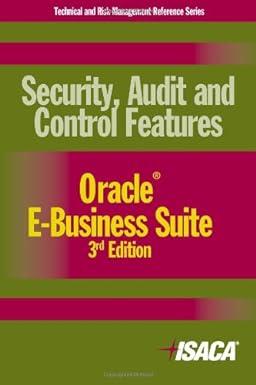Answered step by step
Verified Expert Solution
Question
1 Approved Answer
Calculate the cost per MIPS during (a) peak time and (b) off-peak hours PART II: IT CAPACITY COSTS This is a stylized example of how

Calculate the cost per MIPS during (a) peak time and (b) off-peak hours
PART II: IT CAPACITY COSTS This is a stylized example of how IT costs might be allocated at a bank. It will help you think about how Charles Schwab allocates its IT costs. The answers to the questions below can be addressed in an appendix to your report, and may be answered in a Q\&A format. Setting: A bank needs to assign the cost of its IT capacity to a portion of its transactions, but activity levels during its peak-time hours (9:00 AM5:00PM) and off-peak hours are very different. To perform every off-peak transaction with an acceptable level of service, the bank requires a computing capacity of just 100 million instructions per second (MIPS). The same level of service for peak-time transactions requires 300 MIPS of computing capacity, or the current capacity of the bank's servers. The daily cost of capacity for the bank is $12 per MIPS, or $3,600 overall (\$12 per MIPS x 300 MIPS). There are no economies or diseconomies of scale for server capacity cost. The server capacity has to be purchased in advance, and cannot be scaled up or down on short notice. First, the bank wants to know the cost of the three transactions - balance checks, fund transfers, and printed statements - during peak and non-peak hours. Balance checks require 1 MIPS, funds transfers require 5 MIPS, and printed statements require 15 MIPS. (Note: If total capacity is 100 MIPS and a transaction consumes 1 MIPS, that transaction can only be performed 100 times in a given hour. In the course of a day, the computer system could perform 2,400 [24 x 100] of those transactions.) Second, assume that the bank wants to calculate divisional P\&L on a daily basis. In order to compute divisional P\&L, the bank needs to know how much IT expense it should charge to its Individual and Corporate Banking divisions. On this particular day, the server log indicates that the Individual division consumed 1,920 MIPS in peak hours and 1,280 in non-peak hours, while the Corporate division consumed 480 and 320 MIPS, respectively. Questions: A1.Calculate the cost per MIPS during (a) peak time and (b) off-peak hours A2. Using the costs above, calculate the IT cost of a balance check, a fund transfer, and a printed statement during the peak and non-peak periods. A3. How might the allocation strategy you developed potentially lead to changes in the actual cost structure? A4.Calculate the daily IT cost of the Individual and Corporate divisions. A5. How would your calculations for A4 change in a day where the level of capacity remained the same, but the server log indicates that the Individual division has consumed 640 MIPS in peak hours and 1,024 in non-peak hours, while the Corporate division has consumed 160 MIPS in peak hours and 256 MIPS in non-peak hoursStep by Step Solution
There are 3 Steps involved in it
Step: 1

Get Instant Access to Expert-Tailored Solutions
See step-by-step solutions with expert insights and AI powered tools for academic success
Step: 2

Step: 3

Ace Your Homework with AI
Get the answers you need in no time with our AI-driven, step-by-step assistance
Get Started


